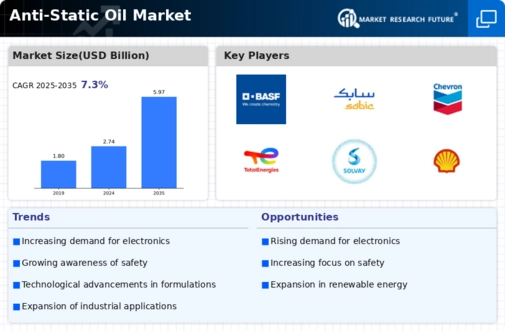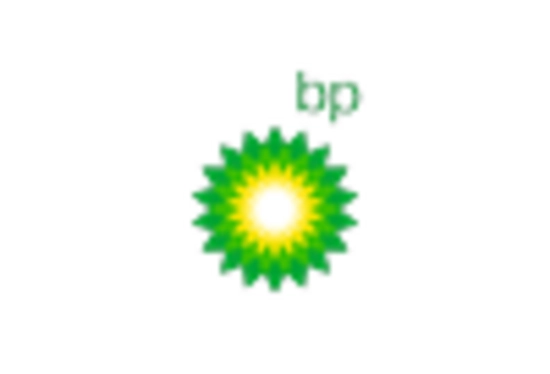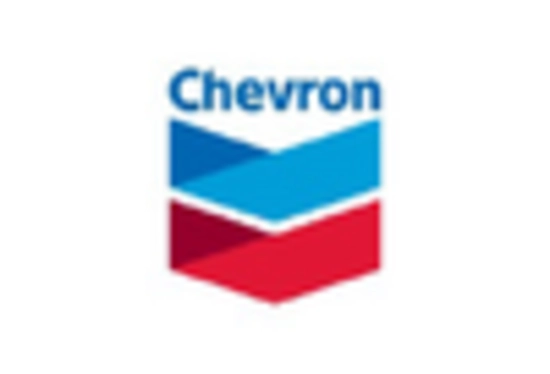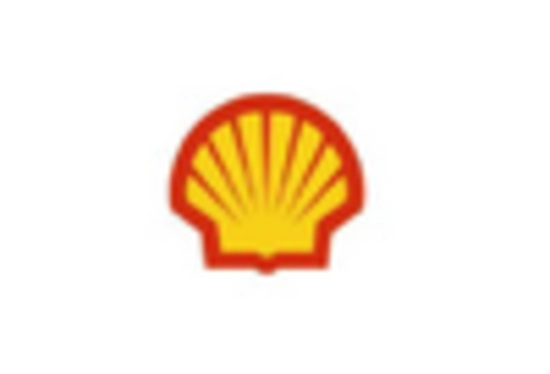The Anti-Static Oil Market is currently characterized by a dynamic competitive landscape, driven by increasing demand for high-performance lubricants across various industries, including electronics, automotive, and manufacturing. Key players such as ExxonMobil (US), Shell (GB), and TotalEnergies (FR) are strategically positioning themselves through innovation and regional expansion. ExxonMobil (US) has focused on enhancing its product portfolio with advanced formulations that cater to the specific needs of industries requiring anti-static properties. Meanwhile, Shell (GB) emphasizes sustainability in its operations, aligning its product development with environmental regulations and consumer preferences. TotalEnergies (FR) is actively pursuing partnerships to bolster its market presence, particularly in emerging economies, thereby shaping a competitive environment that is increasingly collaborative and innovation-driven.
In terms of business tactics, companies are localizing manufacturing to reduce lead times and optimize supply chains, which is particularly crucial in the context of fluctuating global logistics. The market appears moderately fragmented, with several players vying for market share, yet the collective influence of major companies like BP (GB) and Chevron (US) is notable. These firms are leveraging their extensive distribution networks and brand recognition to maintain competitive advantages, while also adapting to regional market demands.
In August 2025, BP (GB) announced a strategic partnership with a leading technology firm to develop a new line of anti-static oils that utilize bio-based materials. This initiative not only reflects BP's commitment to sustainability but also positions the company to meet the growing demand for environmentally friendly products. The collaboration is expected to enhance BP's innovation capabilities and expand its market reach, particularly among eco-conscious consumers.
In September 2025, Chevron (US) launched a new marketing campaign aimed at promoting its latest anti-static oil formulations, which are designed for high-performance applications in the electronics sector. This campaign underscores Chevron's focus on digital transformation and customer engagement, utilizing advanced analytics to tailor its offerings to specific market segments. The strategic emphasis on targeted marketing is likely to strengthen Chevron's brand loyalty and market penetration.
In July 2025, TotalEnergies (FR) completed the acquisition of a regional lubricant manufacturer, enhancing its production capabilities and distribution channels in Asia. This acquisition is significant as it allows TotalEnergies to tap into the rapidly growing demand for anti-static oils in the region, thereby solidifying its competitive position. The integration of local expertise is expected to facilitate quicker responses to market changes and consumer preferences.
As of October 2025, the competitive trends in the Anti-Static Oil Market are increasingly defined by digitalization, sustainability, and the integration of artificial intelligence in product development and supply chain management. Strategic alliances are becoming more prevalent, as companies recognize the value of collaboration in fostering innovation and enhancing operational efficiencies. Looking ahead, the competitive differentiation in this market is likely to evolve from traditional price-based competition to a focus on technological advancements, sustainable practices, and reliable supply chains, reflecting a broader shift in consumer expectations and regulatory landscapes.

















Leave a Comment